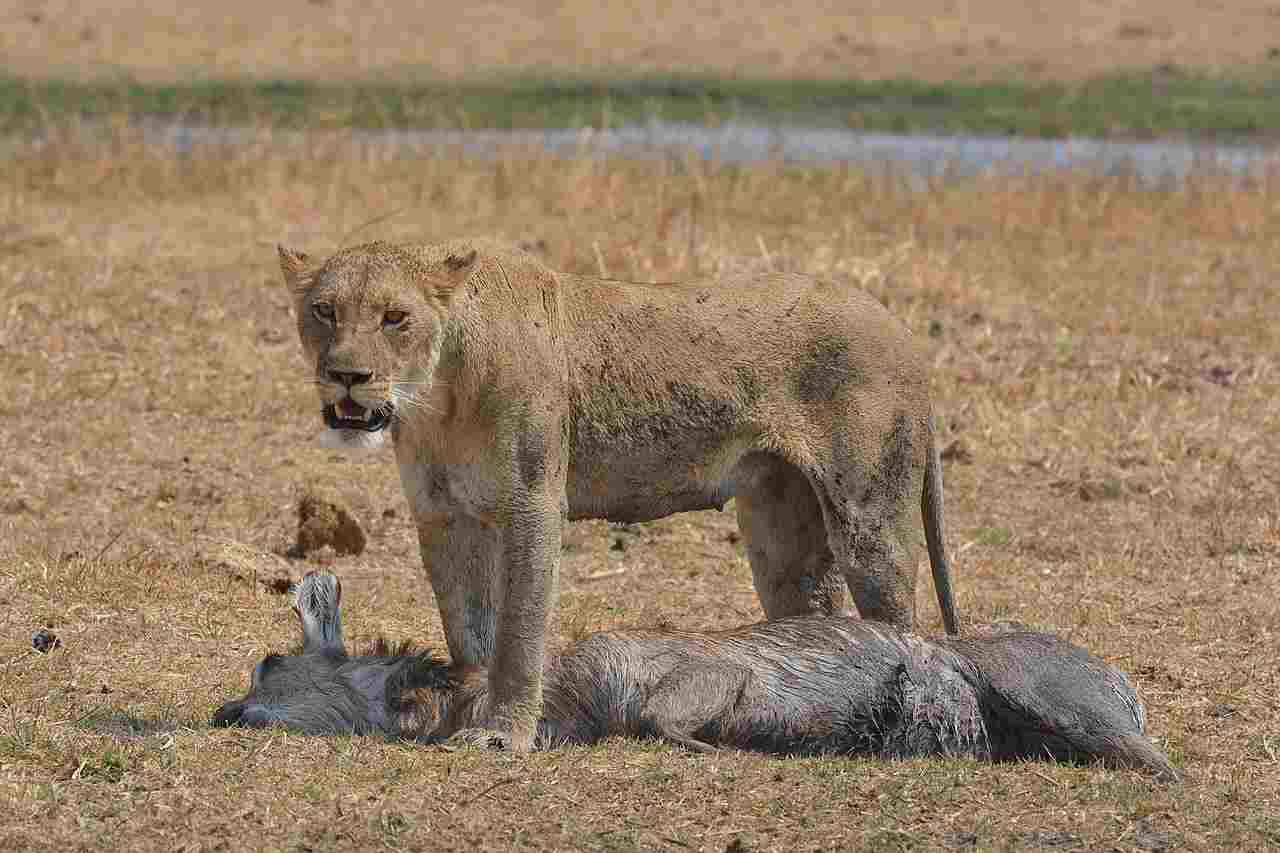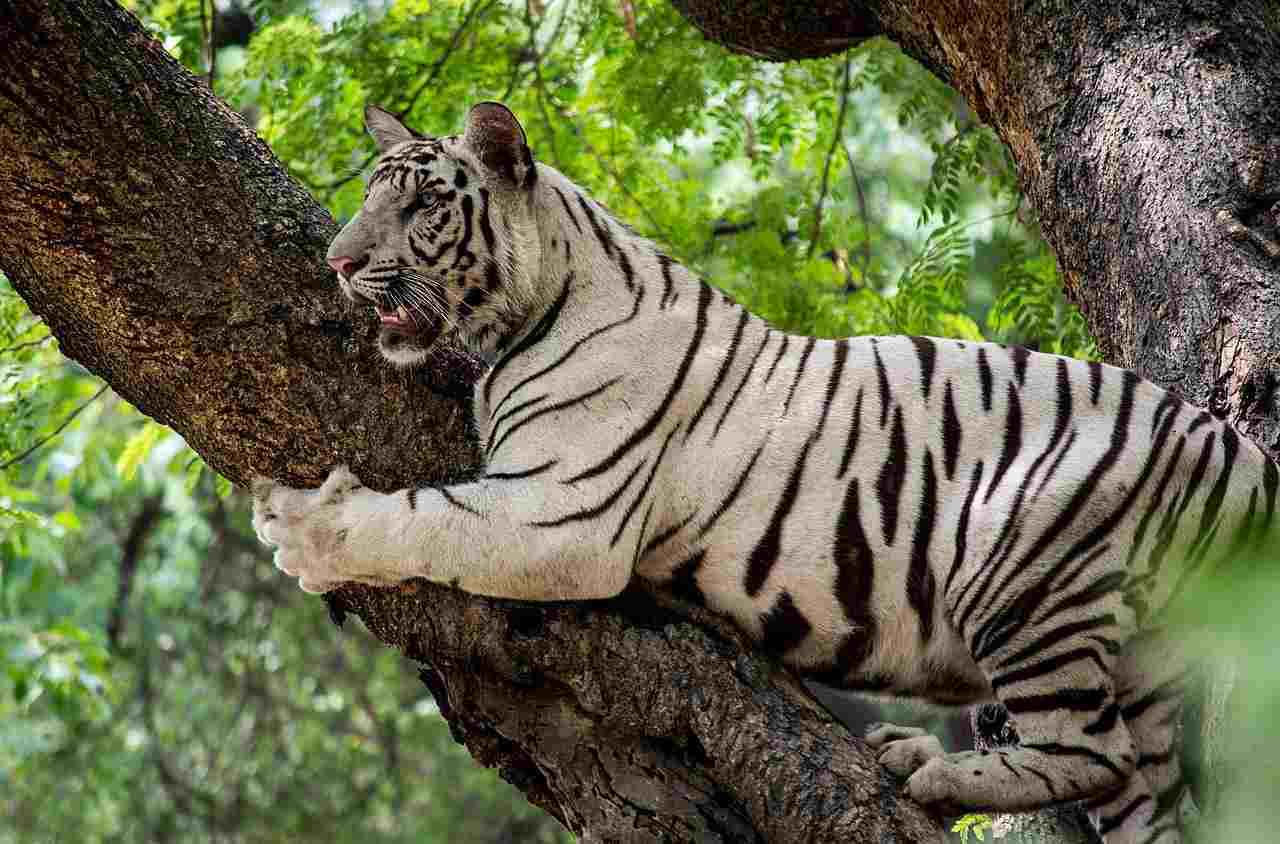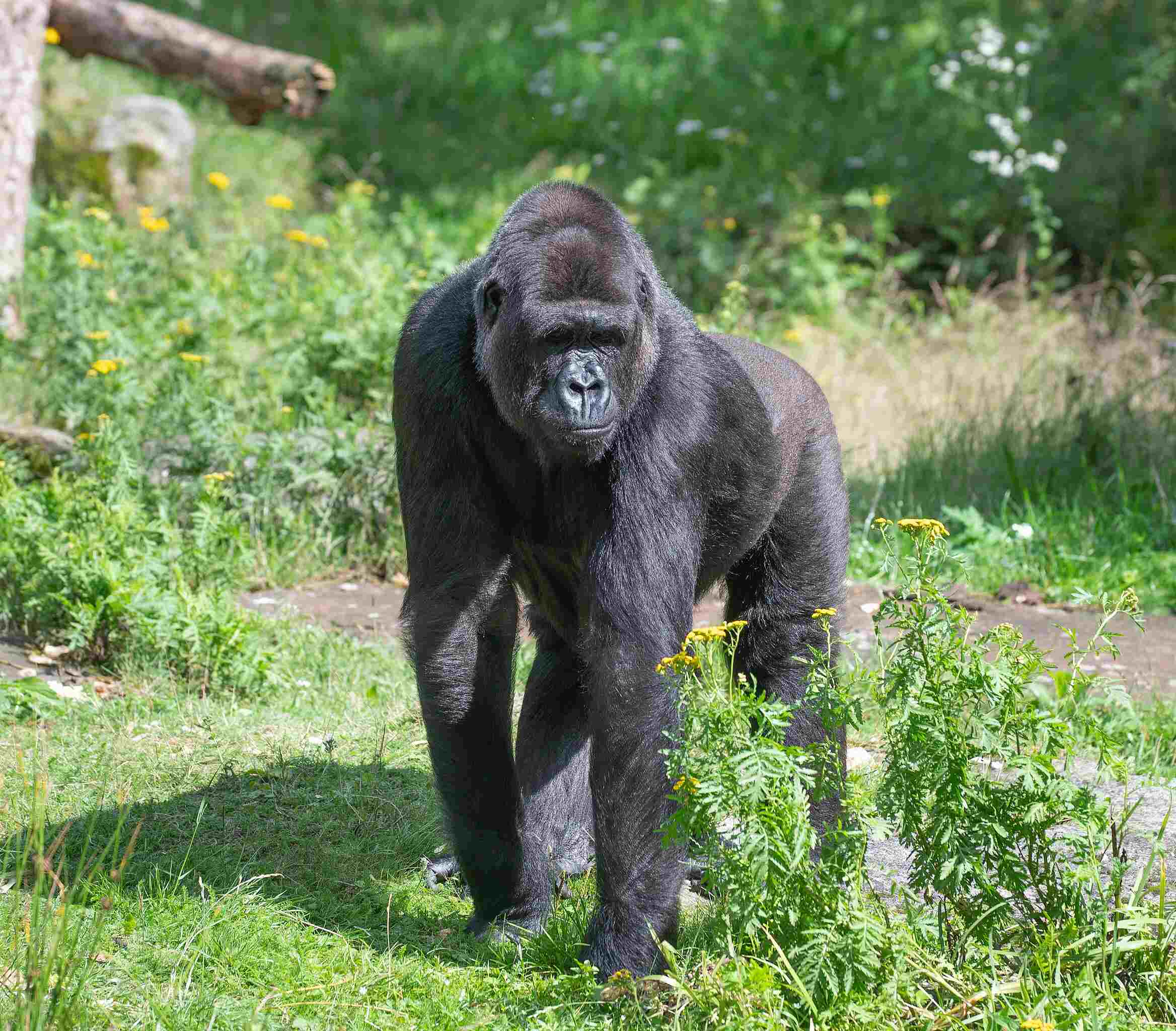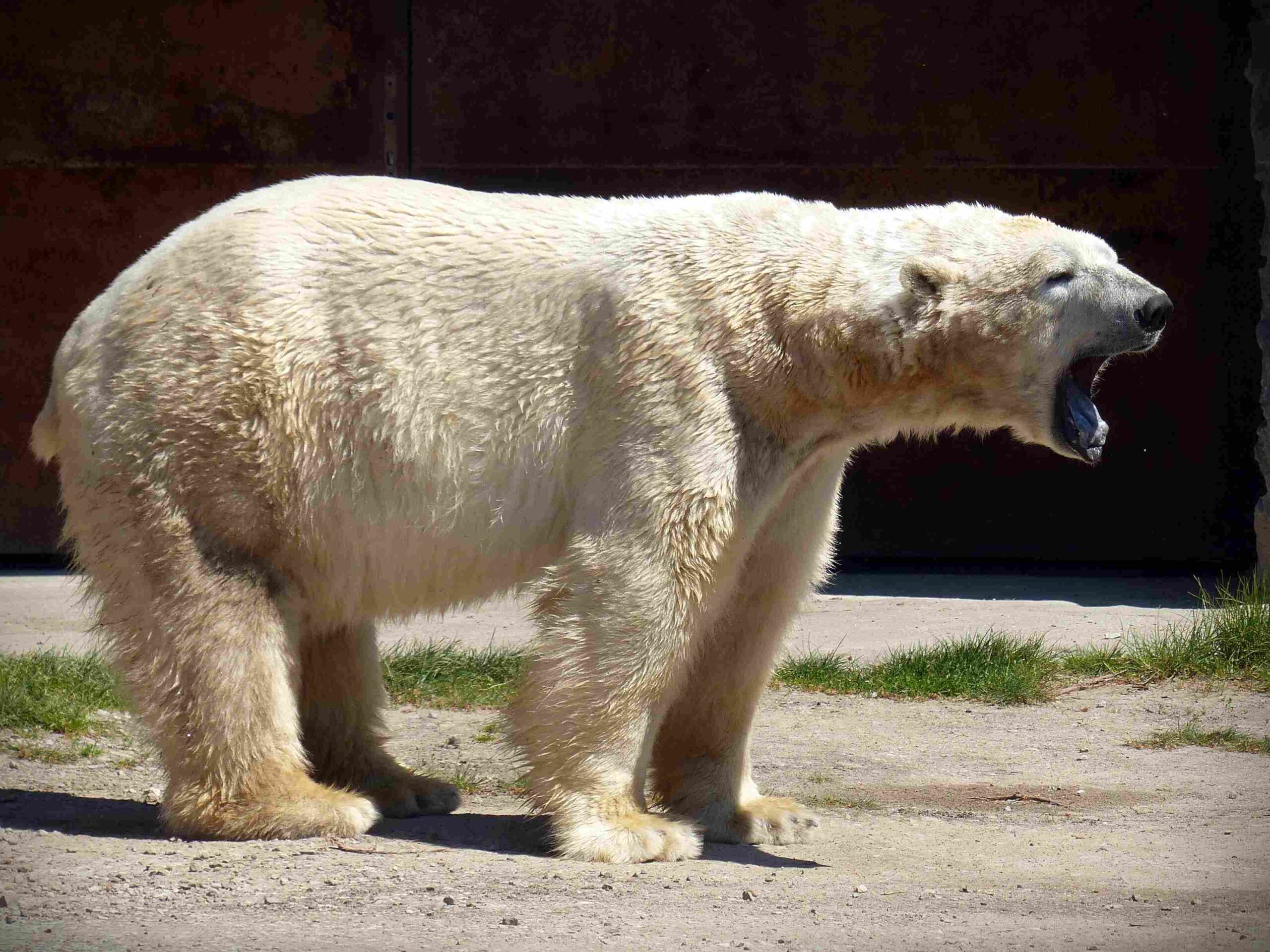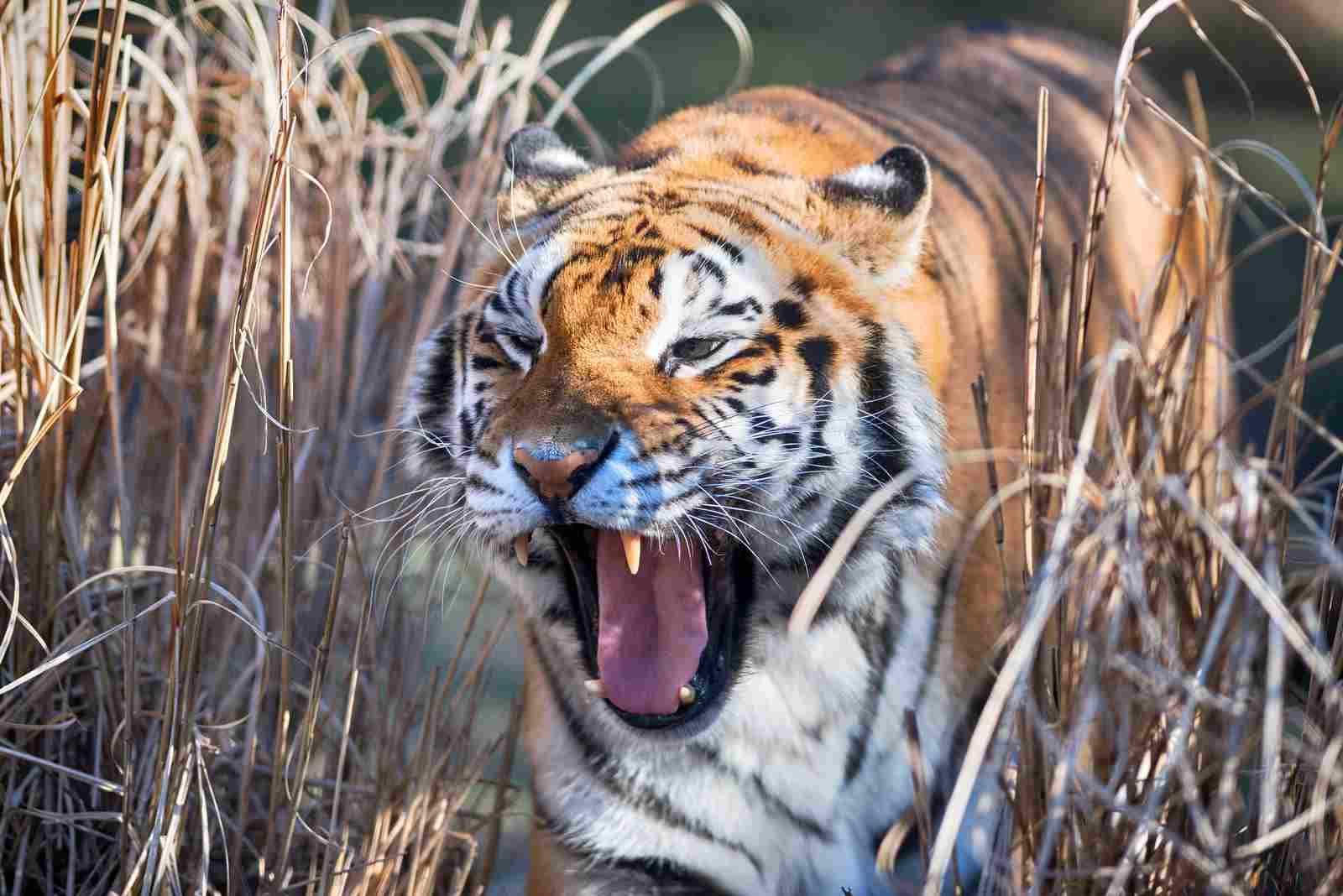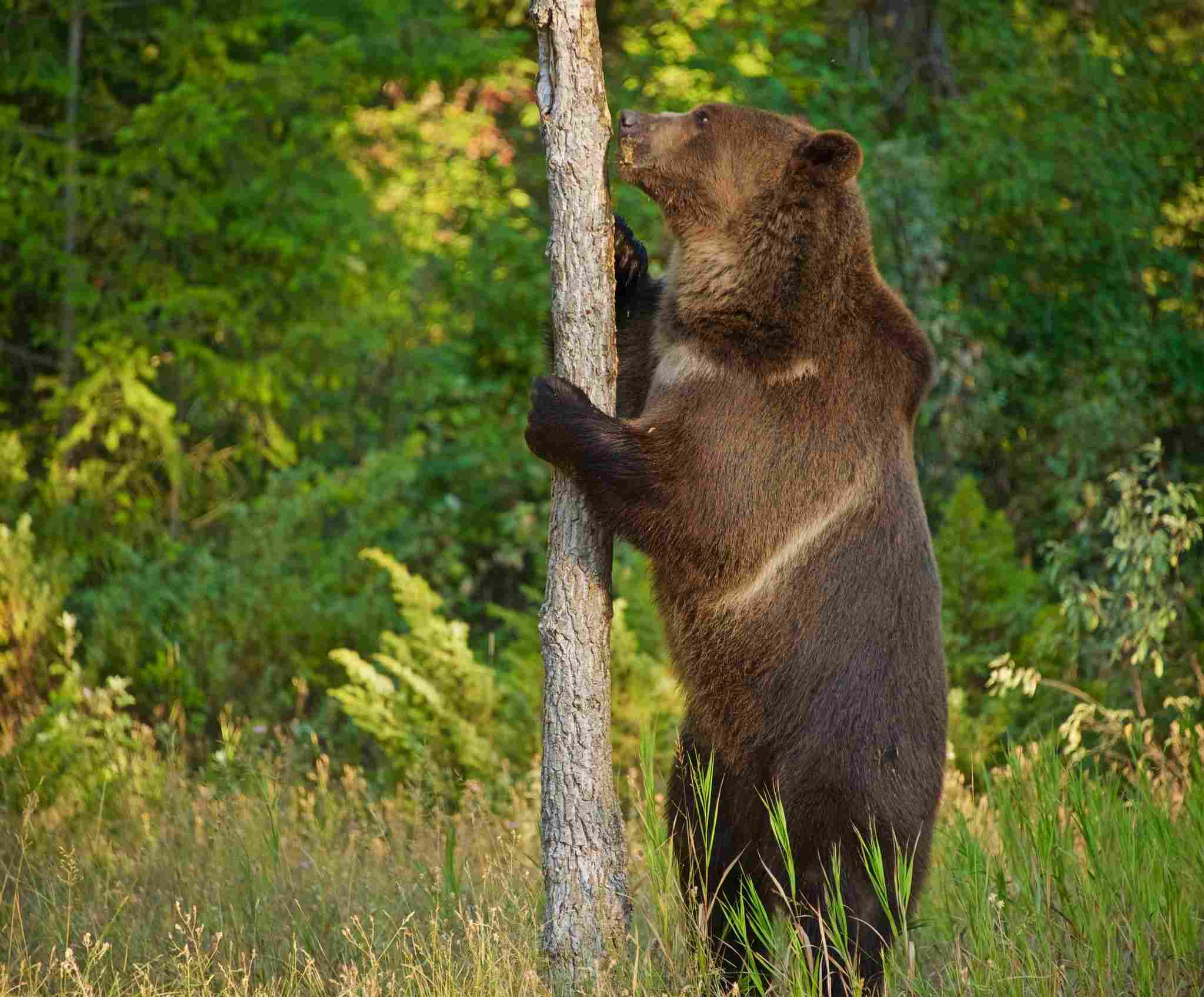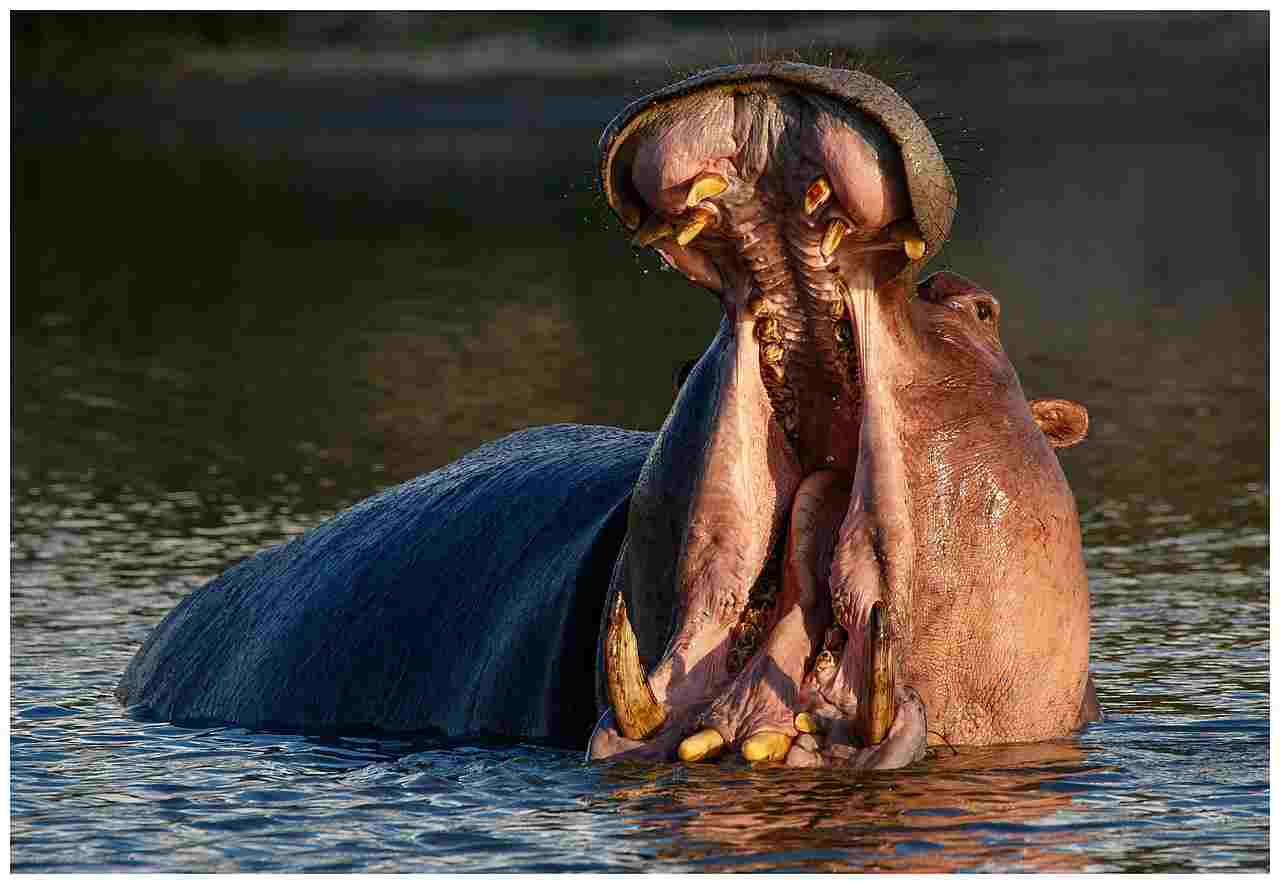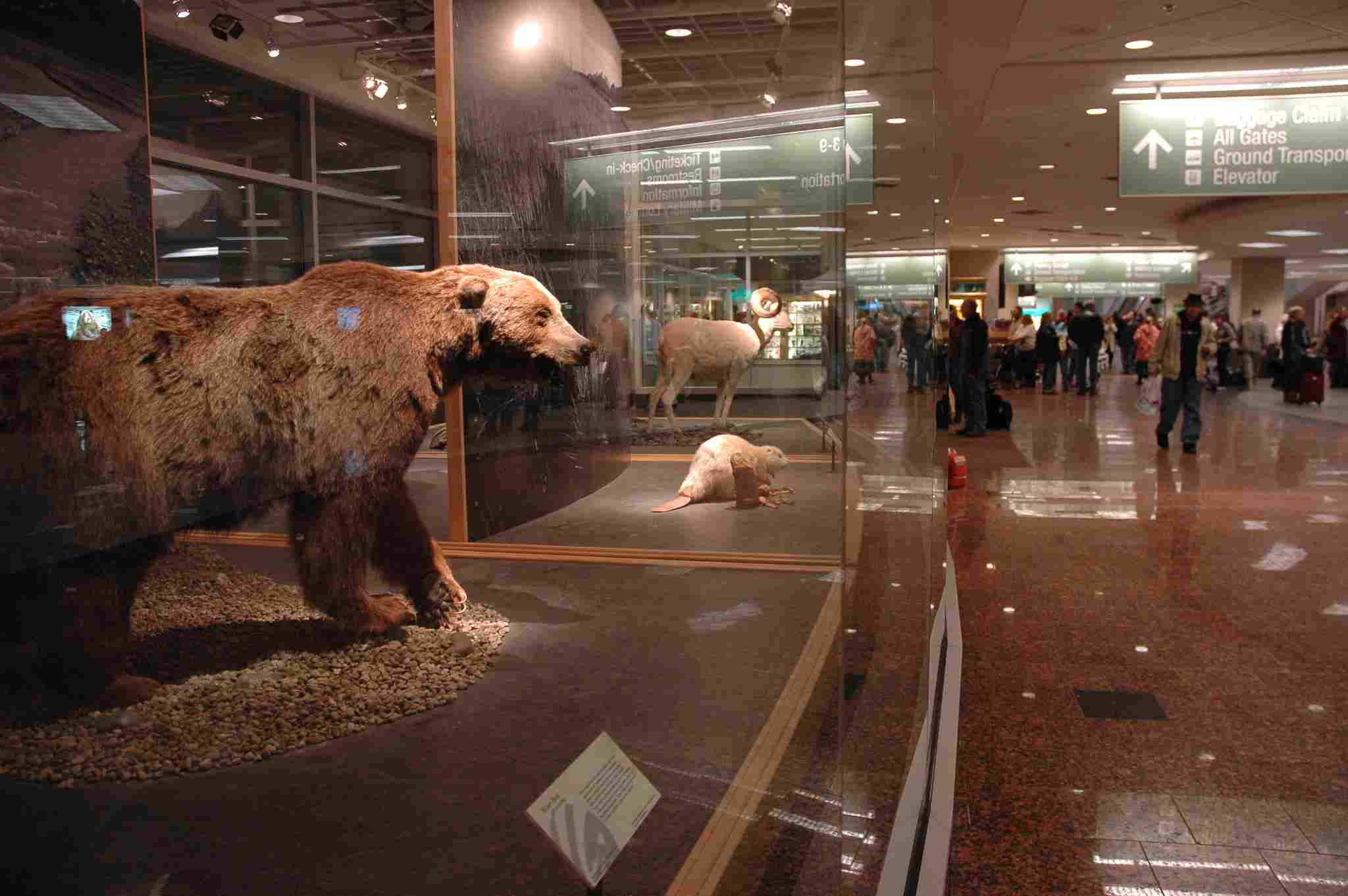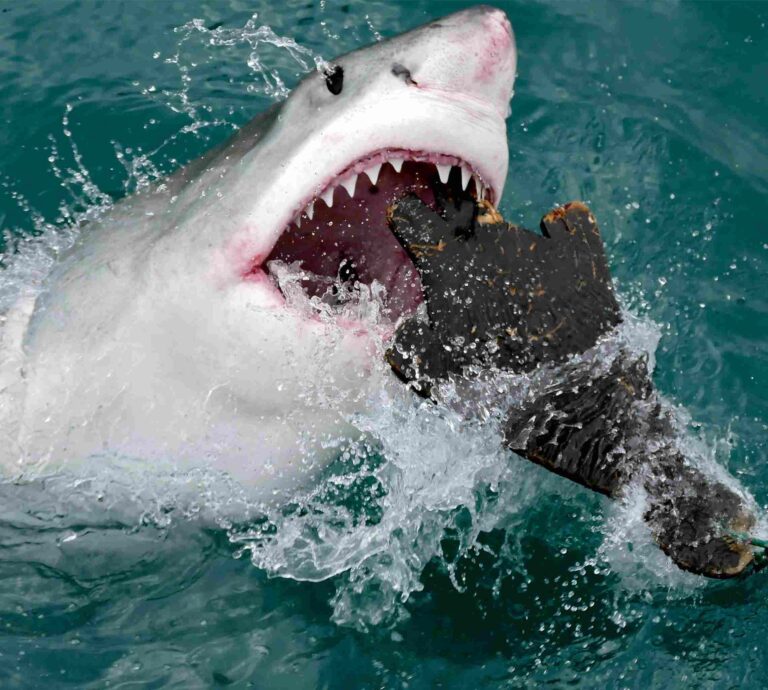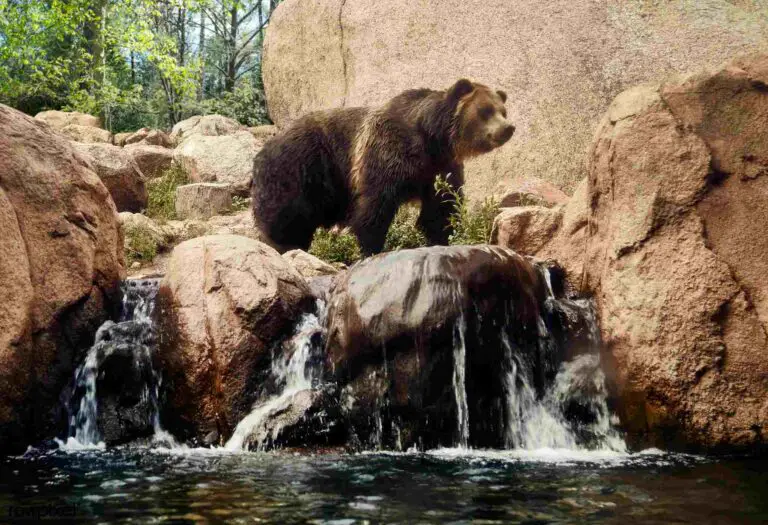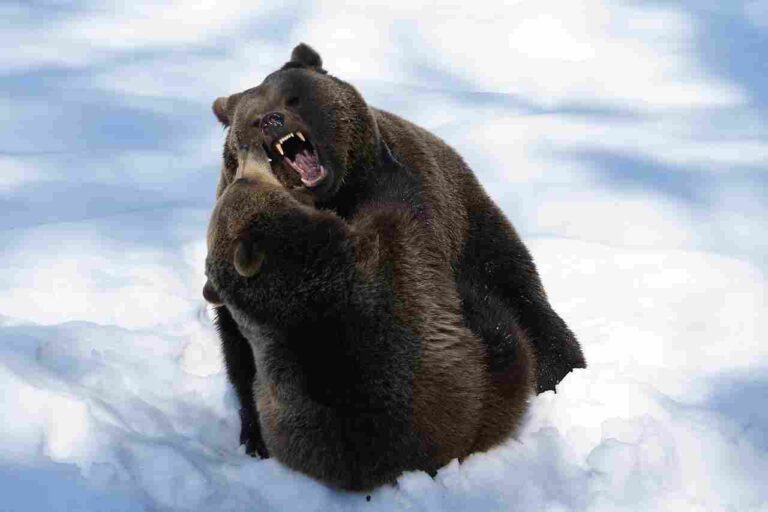Grizzly Bear Vs Black Bear Size, Behavioral Comparison Discussed
Grizzly bears and black bears can be compared to each other based on factors like size, weight, and behavior. These comparisons can help us understand the potential outcomes of interactions between these two bear species.
Key Outcomes of Comparison
A) Size:
When comparing the size of grizzly bears and black bears, it is evident that grizzlies are larger. Grizzlies can reach heights of up to 8 feet and weigh between 400 to 1,500 pounds, while black bears typically measure around 5 to 6 feet and weigh between 200 to 600 pounds.
B) Weight:
As mentioned in the article, grizzly bears outweigh black bears significantly. This difference in weight gives grizzlies an advantage in terms of strength and endurance.
C) Taxonomic Classification:
Both grizzly bears and black bears belong to the Ursidae family and are classified as separate species. Grizzlies are scientifically known as Ursus arctos horribilis, while black bears are known as Ursus americanus.
D) Hypothetical Interaction:
In a hypothetical confrontation between a grizzly bear and a black bear, the grizzly bear is likely to emerge as the victor. Due to their larger size and greater strength, grizzlies have a higher chance of overpowering black bears.
*Physical Comparison
1). Size
Grizzly bears and black bears differ in size, with the former generally being larger. The average height and total body length of grizzly bears are greater compared to black bears. Grizzly bears can reach heights of up to 3.3 feet at the shoulder and have a total body length of around 6.5 to 8 feet. On the other hand, black bears typically stand at around 2.5 feet at the shoulder and have a total body length of approximately 4 to 7 feet.
When comparing the size of grizzly bears and black bears, it is evident that grizzly bears are larger overall. This size difference is an important factor to consider when examining the physical characteristics and behaviors of these two bear species. The larger size of grizzly bears may contribute to their increased strength and endurance, as well as their ability to dominate in certain ecological contexts.
Understanding the size differences between grizzly bears and black bears is important for comprehending their physical capabilities and ecological roles.
2). Weight
When comparing the weight of grizzly bears and black bears, it is clear that grizzly bears are generally heavier. On average, male grizzly bears can weigh between 400 to 1,200 pounds, while female grizzly bears typically weigh between 290 to 400 pounds. In contrast, male black bears usually weigh between 150 to 600 pounds, with female black bears weighing around 90 to 300 pounds.
The weight difference between grizzly bears and black bears is significant and plays a crucial role in their physical capabilities and behaviors. The larger size and weight of grizzly bears contribute to their increased strength and endurance, allowing them to dominate in certain ecological contexts. This weight advantage also impacts their feeding habits and predation strategies.
The heavier weight of grizzly bears may also influence their mode of locomotion and agility. Despite their larger size, grizzly bears are known for their remarkable agility and ability to navigate various terrains. This combination of size and agility makes them formidable predators in their respective habitats.
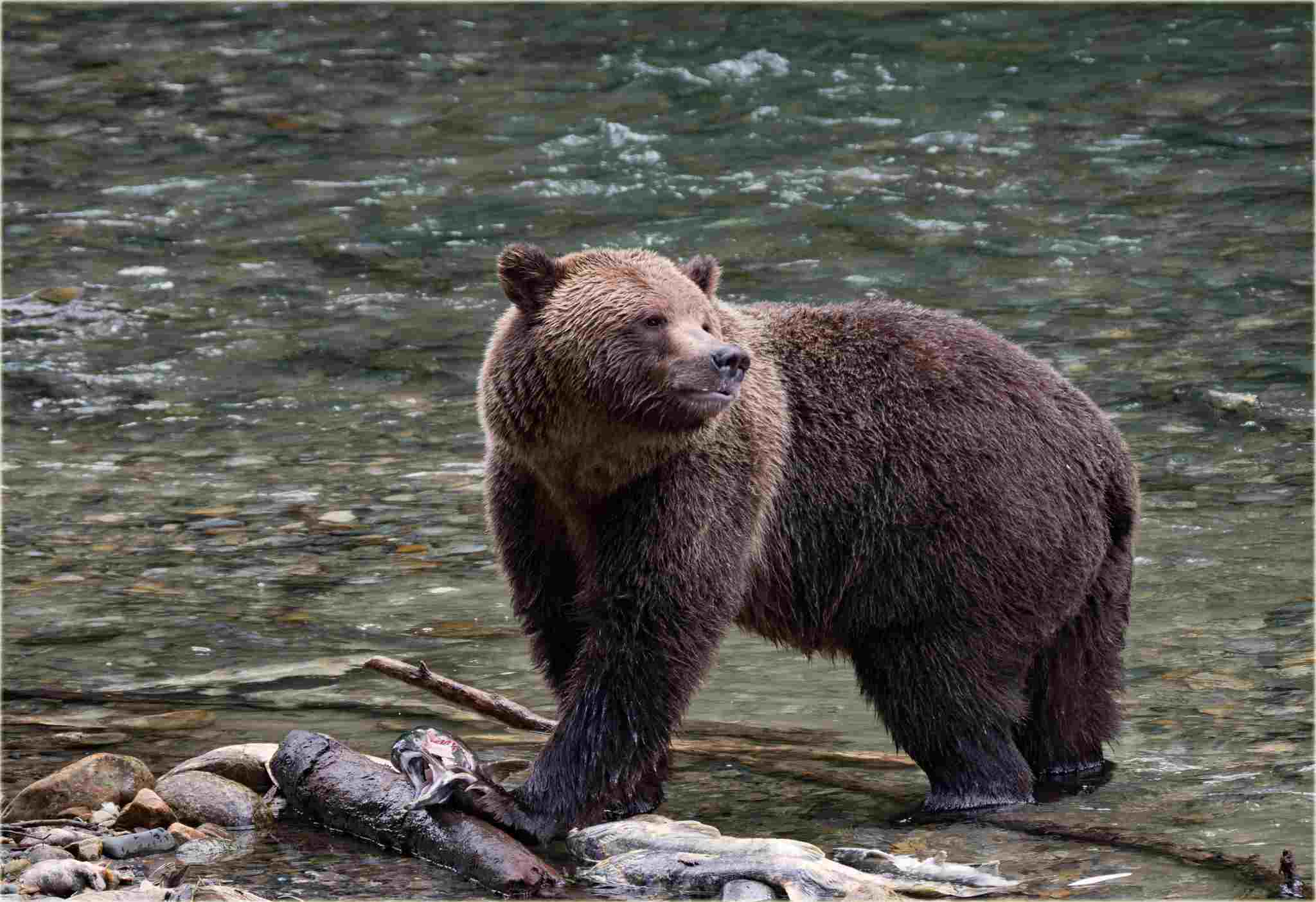
3). Skeletal Anatomy
When comparing the skeletal anatomy of grizzly bears and black bears, there are notable differences in their bone structure and density. These differences contribute to variations in their physical capabilities and behaviors.
Grizzly bears have a larger and more robust skeletal structure compared to black bears. Their bones are thicker and denser, providing them with greater strength and support for their larger body size. This allows grizzly bears to exert more force and withstand higher levels of stress.
In contrast, black bears have a relatively lighter skeletal structure. Their bones are thinner and less dense, which is reflective of their smaller body size. This lighter skeletal structure provides black bears with increased agility and flexibility, allowing them to navigate through dense vegetation and climb trees more easily.
The differences in skeletal anatomy between grizzly bears and black bears also impact their mode of locomotion. Grizzly bears rely on their strong bones and powerful muscles to run, climb, and swim with ease. On the other hand, black bears’ lighter skeletal structure enables them to be more nimble and agile, making them adept climbers and proficient swimmers.
4). Mode of Locomotion
Grizzly bears and black bears have distinct modes of locomotion that are influenced by their skeletal anatomy and physical characteristics.
Grizzly bears are known for their impressive running speed, which allows them to cover long distances quickly. With their powerful muscles and robust skeletal structure, grizzly bears can reach speeds of up to 35 miles per hour. They are also skilled climbers, using their strong limbs and sharp claws to ascend trees and rocky terrain. While grizzly bears cannot fly or leap like some other animals, their agility and strength enable them to navigate challenging landscapes with ease. Additionally, grizzly bears are proficient swimmers, using their large paws and strong strokes to move through water efficiently.
On the other hand, black bears have a lighter skeletal structure that enhances their climbing abilities. They are excellent tree climbers, using their sharp claws and flexible limbs to ascend and descend trees effortlessly. Black bears are also capable swimmers, using their smaller size and streamlined bodies to navigate through water. While they may not possess the same running speed as grizzly bears, black bears are still agile and can move quickly when necessary.
5). Speed
Grizzly bears and black bears have different speeds, with the grizzly bear being faster on land. The average speed of a grizzly bear is around 30 miles per hour, while black bears can reach speeds of up to 25 miles per hour. This difference in speed can be attributed to their size and physical characteristics.
Grizzly bears, being larger and more muscular, have a greater stride length and can cover more ground with each step. Their powerful muscles and robust skeletal structure allow them to run at faster speeds, making them more efficient hunters and giving them an advantage in pursuing prey or escaping potential threats.
On the other hand, black bears, although not as fast as grizzly bears, are still agile and can move quickly when necessary. Their smaller size and lighter skeletal structure make them more nimble and flexible, allowing them to navigate through dense vegetation or climb trees with ease.
6). Agility
When comparing the agility of grizzly bears and black bears, several factors come into play. Agility is determined by speed, mode of locomotion, and overall physical characteristics.
In terms of speed, grizzly bears have the advantage. Their larger size and muscular build allow them to cover more ground with each stride, making them faster runners. This increased speed gives them an edge in hunting and evading potential threats. On the other hand, black bears, although not as fast as grizzly bears, are still quite agile. Their smaller size and lighter skeletal structure make them nimble and flexible, enabling them to navigate through dense vegetation and climb trees with ease.
When it comes to mode of locomotion, both grizzly bears and black bears are adept at both walking and running. However, grizzly bears have a more powerful stride due to their larger muscles and robust skeletal anatomy. This allows them to move with greater force and efficiency, enhancing their overall agility.
7). Relative Strength and Endurance
When comparing the relative strength and endurance of grizzly bears and black bears, several factors come into play, including muscular endurance, size, weight, and agility.
In terms of muscular endurance, grizzly bears have the advantage. Their larger size and muscular build allow them to exert more force over a longer period of time. This is particularly important when it comes to activities such as digging for food or defending territory. On the other hand, black bears, although smaller in size, still possess a considerable amount of muscular endurance. They are capable of climbing trees, foraging for food, and engaging in physical confrontations when necessary.
When it comes to overall strength, grizzly bears are generally stronger due to their larger size and weight. Their powerful muscles and robust skeletal structure enable them to exert more force and overpower their prey or opponents. Black bears, although smaller and lighter, still possess a significant amount of strength, allowing them to effectively hunt and defend themselves.
In terms of endurance, grizzly bears have the advantage once again. Their larger size and ability to store more fat reserves enable them to endure longer periods without food or water. This is particularly important during times of hibernation or when resources are scarce. Black bears, although smaller, also possess a good level of endurance, allowing them to survive in various habitats and adapt to changing environmental conditions.
8). Bite force
When comparing the bite force of grizzly bears and black bears, it is important to consider their average bite force and determine which species has a higher bite force. The bite force of an animal is a crucial factor in its ability to capture and subdue prey, as well as defend itself against potential threats.
Grizzly bears, with their larger size and more robust build, generally possess a higher bite force compared to black bears. Their powerful jaws and sharp teeth allow them to exert a significant amount of force when biting down. This enhanced bite force enables grizzly bears to effectively crush bones and tear through tough hides, making them formidable predators.
On the other hand, black bears, although smaller in size, still possess a considerable bite force. While not as powerful as that of grizzly bears, their bite force is sufficient for capturing and consuming their prey, which primarily consists of vegetation, insects, and small mammals.
9). Attack and Defense Method(s)
Grizzly bears and black bears have different attack and defense methods, which can be compared to determine their efficiency. When it comes to attack, grizzly bears rely on their size, strength, and powerful forelimbs to overpower their prey or potential threats. With their larger size and more robust build, grizzly bears have a greater advantage in physical confrontation. They can use their strong jaws and sharp claws to deliver powerful bites and swipes, causing significant damage.
On the other hand, black bears have a different approach to attack and defense. While they may not possess the same physical strength as grizzly bears, black bears are known for their agility and climbing abilities. They can quickly climb trees to escape danger or use their sharp claws to defend themselves. Black bears also have a strong sense of smell, which they use to detect potential threats or food sources.
Comparing the efficiency of these attack and defense methods, it is important to consider the specific circumstances and context. Grizzly bears’ size and strength make them formidable opponents, especially in direct confrontations. However, black bears’ agility and climbing abilities give them an advantage in certain situations where escape or evasion is necessary.
*Hypothetical Confrontation
Grizzly bears are likely to defeat black bears in a violent confrontation, as they are generally larger, stronger and more ferocious.
In a hypothetical confrontation between a grizzly bear and a black bear, the outcome would depend on various factors. While both species are formidable in their own right, the grizzly bear may have the advantage due to its larger size and physical attributes.
Grizzly bears are known for their immense size and strength, which gives them a significant advantage in a physical confrontation. With their powerful forelimbs, strong jaws, and sharp claws, they can deliver devastating blows and inflict serious damage. Additionally, their larger size provides them with a greater level of intimidation and dominance.
However, it is important to consider that black bears are not defenseless. Despite being smaller in size, they possess remarkable agility and climbing abilities. This allows them to escape danger by quickly climbing trees or using their sharp claws for defense. Black bears also have a strong sense of smell, which helps them detect potential threats or food sources.
*Behavioral Comparison
10). Feeding/Predation Habits
Feeding habits play a crucial role in understanding the behavior and ecological niche of animals. When comparing the feeding habits of grizzly bears and black bears, it is important to consider their diet and mode of predation.
Both grizzly bears and black bears are omnivores, meaning they consume a variety of food sources. Their diet includes vegetation such as berries, nuts, grasses, and roots, as well as animal matter like fish, insects, and small mammals. However, there are some differences in their preferred food sources.
Grizzly bears are known to have a more diverse and predatory diet compared to black bears. They have a higher tendency to consume larger mammals, such as elk and moose, and are more likely to scavenge on carrion. Black bears, on the other hand, primarily feed on plant matter and have a preference for fruits and nuts.
In terms of predation, both grizzly bears and black bears are opportunistic hunters. They use different methods to catch their prey, depending on the availability and type of food source. Grizzly bears have been observed using their size and strength to overpower larger prey, while black bears rely more on their agility and climbing skills to catch smaller prey like fish or rodents.
11). Social Behavior
When comparing the social behavior of grizzly bears and black bears, it is important to consider whether they are solitary or social animals and their parental relations.
Grizzly bears are generally solitary animals, preferring to roam and forage alone. They have large home ranges and tend to avoid interactions with other bears, except during the mating season. However, female grizzly bears may exhibit a more social behavior when they have cubs. They are known to be protective and nurturing mothers, teaching their cubs essential survival skills.
On the other hand, black bears are more adaptable in terms of social behavior. While they are primarily solitary animals, they can also exhibit a certain level of social interaction. Black bears may tolerate the presence of other bears in their territory, especially during abundant food sources like berry patches. However, they still maintain a certain level of territoriality and may display aggressive behaviors if their space is invaded.
In terms of parental relations, both grizzly bears and black bears have a strong bond with their cubs. Female bears invest a significant amount of time and effort in raising their young, teaching them how to find food, climb trees, and defend themselves. The cubs typically stay with their mothers for about two years before venturing off on their own.
Generally, while grizzly bears are more solitary in nature, both grizzly bears and black bears exhibit social behaviors to some extent, particularly when it comes to maternal care and interactions during certain seasons or food availability.
12). Aggressive Tendency
When comparing the aggressive tendencies of grizzly bears and black bears, it is important to consider their behavior in different situations and the factors that can trigger aggression.
Both grizzly bears and black bears have the potential to display aggression, but the extent and frequency may vary. Grizzly bears are generally considered to be more aggressive than black bears. This can be attributed to their larger size, territorial nature, and protective instincts, especially when it comes to defending their cubs or food sources.
Aggression in bears can be triggered by various factors, including perceived threats, competition for resources, or surprise encounters. It is important to note that bears are typically more aggressive when they feel threatened or cornered. It is crucial to give them space and avoid any actions that may provoke them.
In terms of a grizzly bear vs black bear comparison, grizzly bears are more likely to exhibit aggressive behavior due to their size and strength. However, it is important to remember that each bear is an individual, and their behavior can vary. Some black bears may also display aggression if they feel threatened or if their territory is invaded.
13). Danger to Humans (and Pets)
When considering the danger posed by grizzly bears and black bears to humans and pets, it is important to take into account their behavior, size, and aggression. Grizzly bears, being larger and more aggressive, can potentially pose a greater threat.
Grizzly bears have been known to harm, kill, and even eat humans and pets in certain situations. Their territorial nature and protective instincts, especially when it comes to defending their cubs or food sources, can lead to aggressive behavior towards humans and pets. It is crucial to exercise caution and take appropriate precautionary measures when in grizzly bear territory.
On the other hand, black bears, although generally less aggressive than grizzly bears, can also pose a danger. While they are typically more inclined to avoid human interaction, they may display aggression if they feel threatened or if their territory is invaded. It is important to respect their space and avoid any actions that may provoke them.
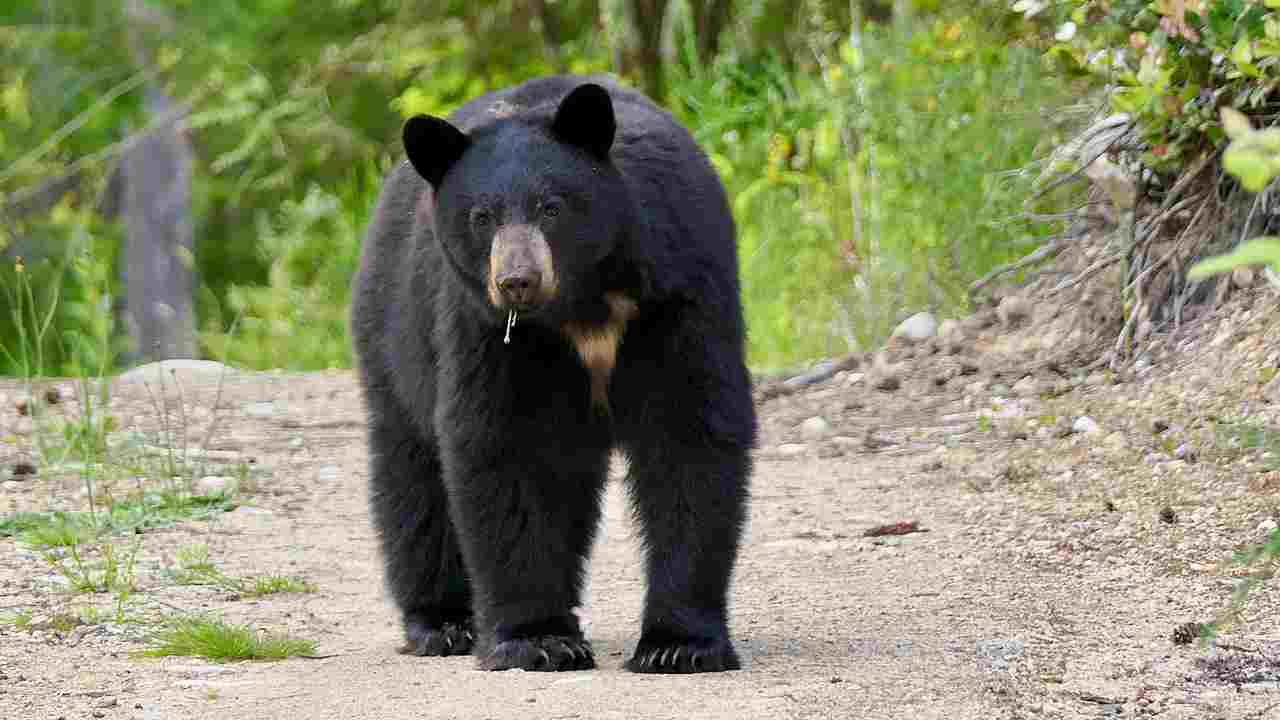
13a). Likelihood of Interaction (With Humans)
Grizzly bears and black bears have different likelihoods of interacting with humans, especially around human settlements. Grizzly bears are more commonly found in remote wilderness areas, away from human populations. However, as human development expands into their habitats, there is an increased chance of encounters between grizzly bears and humans.
Black bears, on the other hand, are more adaptable and can be found in a variety of habitats, including forests near human settlements. This increases the likelihood of black bear-human interactions, as they may come into contact with humans while searching for food or exploring their surroundings.
13b). Precautionary Measure(s)
If you encounter a grizzly bear, it is crucial to remain calm and avoid direct eye contact. Slowly back away while speaking in a calm, assertive voice. Carry bear spray as a precautionary measure and know how to use it effectively. If a grizzly bear charges, play dead by lying flat on your stomach with your hands clasped behind your neck and legs spread apart to make it harder for the bear to flip you over.
When encountering a black bear, it is important to also remain calm and avoid direct eye contact. Make yourself appear larger by raising your arms and standing tall. Back away slowly and do not run, as this may trigger a chase response. If a black bear attacks, fight back aggressively using any available objects or your fists and feet.
*Ecological Comparison
14). Taxonomic Classification
The taxonomic classification of grizzly bears and black bears reveals their relationship and evolutionary history. Both species belong to the same genus, Ursus, but they are classified as different species. The grizzly bear is scientifically known as Ursus arctos horribilis, while the black bear is known as Ursus americanus.
Despite their classification as separate species, grizzly bears and black bears share a common ancestry and are closely related. This implies that they have certain similarities in their genetic makeup and physical characteristics. However, their distinct species classification also highlights the unique adaptations and traits that differentiate them from each other.
In the grizzly bear vs black bear comparison, understanding their taxonomic classification provides a foundation for exploring their similarities and differences in various aspects.
15). Skin/Coat Texture, Camouflage
The skin and coat texture of grizzly bears and black bears play a crucial role in their survival and adaptation to their respective environments. Both species have distinct characteristics that aid in their camouflage and protection.
Grizzly bears have a coarse and shaggy coat, which is typically brown in color. This texture helps them blend in with their surroundings, particularly in forested areas where their fur matches the tree trunks and fallen leaves. The long guard hairs on their back and shoulders provide insulation and protection from the elements.
On the other hand, black bears have a sleek and glossy coat, which can vary in color from black to brown, cinnamon, or even blonde. This smooth texture allows them to move silently through the forest, making them excellent hunters and predators. Their coat color also helps them blend in with the shadows and dense vegetation, making them less visible to potential threats.
In terms of camouflage, both grizzly bears and black bears have evolved to match their habitats. Grizzly bears’ brown fur helps them blend in with the forested areas they inhabit, while black bears’ darker coat allows them to blend in with the shadows and dense vegetation. This camouflage provides them with an advantage when hunting or avoiding predators.
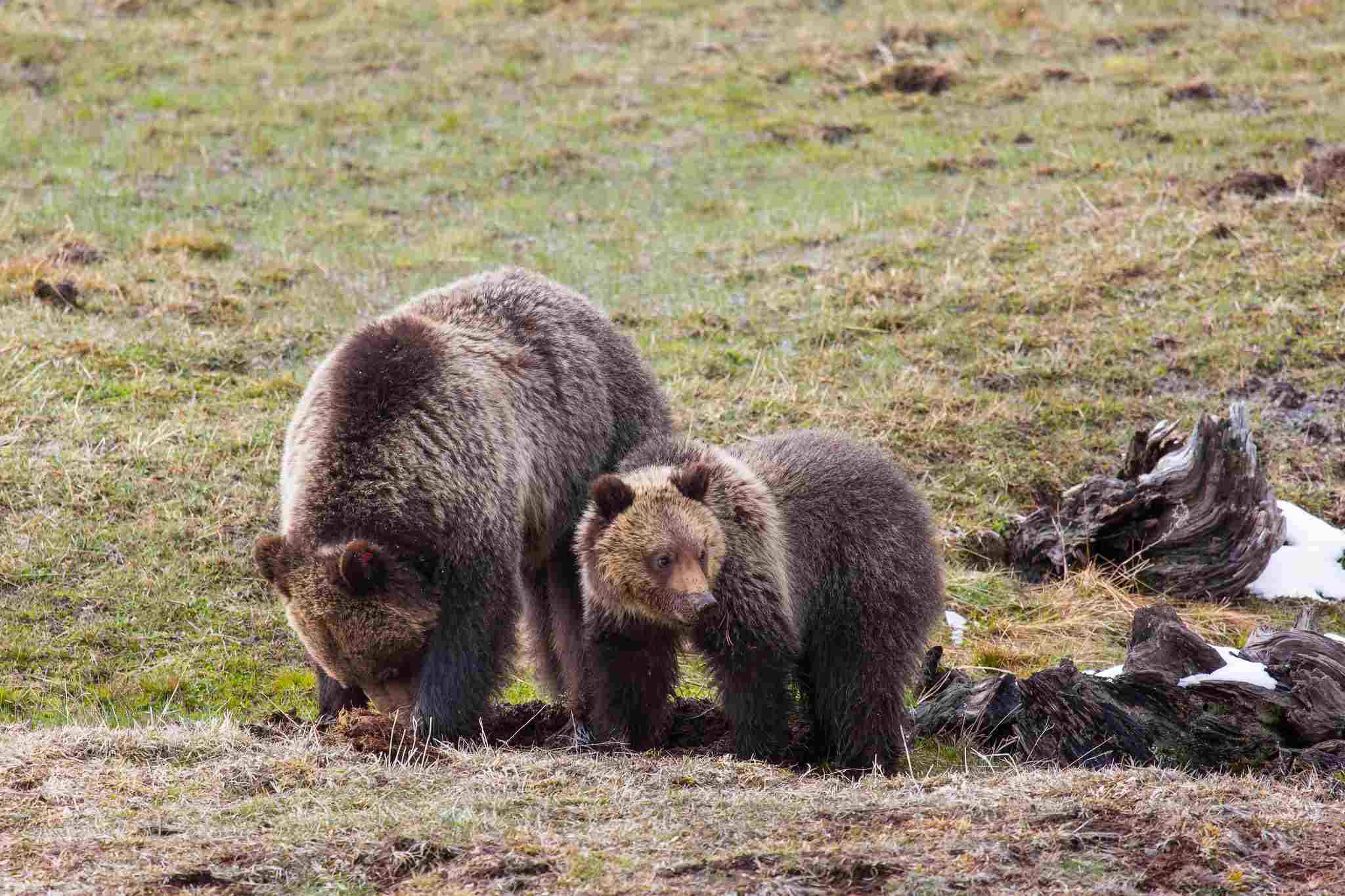
16). Reproduction
When it comes to reproduction, grizzly bears and black bears have some notable differences. Both species are viviparous, meaning they give birth to live young rather than laying eggs. However, there are variations in their gestation periods and reproductive behaviors.
Grizzly bears have a longer gestation period compared to black bears, lasting around 6 to 8 months. During this time, the female grizzly bear will find a den to give birth and raise her cubs. Typically, grizzly bears give birth to two or three cubs, although litter sizes can vary. The cubs are born blind and helpless, relying on their mother for nourishment and protection.
On the other hand, black bears have a shorter gestation period, lasting around 2 to 3 months. Similar to grizzly bears, black bear females also find a den to give birth. However, black bears tend to have smaller litters, usually consisting of one to four cubs. The cubs are born with their eyes open and are more independent at birth compared to grizzly bear cubs.
17). Lifespan
The lifespan of grizzly bears and black bears can vary depending on various factors, including their habitat and whether they are in the wild or in captivity.
In the wild, grizzly bears have an average lifespan of around 20 to 25 years. However, some grizzly bears have been known to live up to 30 years or more. Factors such as food availability, competition, and predation can influence the lifespan of grizzly bears in the wild.
Black bears, on the other hand, have a slightly longer lifespan in the wild compared to grizzly bears. On average, black bears can live up to 25 to 30 years in their natural habitat. Similar to grizzly bears, certain factors like food availability and predation can impact the lifespan of black bears in the wild.
When it comes to captivity, both grizzly bears and black bears have the potential to live longer than their wild counterparts. In well-managed captive environments, grizzly bears can live up to 35 years or more, while black bears can live up to 40 years or more. The controlled diet, veterinary care, and protection from natural threats contribute to their extended lifespan in captivity.
18). Habitat
The habitat of grizzly bears and black bears plays a crucial role in their survival and behavior. Grizzly bears are primarily found in North America, inhabiting a range of ecosystems including forests, mountains, and tundra regions. They are known to thrive in diverse habitats such as coastal areas, alpine meadows, and even arctic environments. This adaptability allows grizzly bears to occupy a wide geographic range, from Alaska to parts of Canada and the United States.
On the other hand, black bears have a more extensive distribution, being found not only in North America but also in parts of Asia and Europe. They are adaptable creatures that can inhabit various habitats, including forests, swamps, and even urban areas. Black bears are known for their ability to thrive in both dense forests and open landscapes, making them highly versatile in terms of habitat selection.
While both grizzly bears and black bears can be found in overlapping regions, their specific habitat preferences may differ. Grizzly bears tend to favor more remote and rugged areas, while black bears are more adaptable to human-altered landscapes. This difference in habitat preference can influence their behavior and interactions with humans.
19). Geographic Range
The geographic range of grizzly bears and black bears is an important factor in understanding their distribution and potential interactions. Grizzly bears are primarily found in North America, with their range extending from Alaska down to parts of Canada and the United States. They inhabit a variety of ecosystems, including forests, mountains, and tundra regions. This wide distribution allows for a higher chance of encountering grizzly bears in these areas.
On the other hand, black bears have a more extensive geographic range, being found not only in North America but also in parts of Asia and Europe. They can be found in various habitats, including forests, swamps, and even urban areas. Black bears are known for their adaptability, which allows them to thrive in both dense forests and open landscapes. This broader range increases the likelihood of crossing paths with black bears in different parts of the world.
While both grizzly bears and black bears can be found in overlapping regions, their specific geographic ranges may differ. Grizzly bears tend to favor more remote and rugged areas, while black bears are more adaptable to human-altered landscapes. This difference in range and habitat preference can influence the likelihood of encountering each species in different parts of the world.
20). Ecologic Importance
The ecological importance of grizzly bears and black bears cannot be overstated. Both species play crucial roles in their respective ecosystems, contributing to the overall balance and health of the environment.
Grizzly bears, with their large size and omnivorous diet, are considered keystone species. They have a significant impact on their habitat through their feeding habits and role as seed dispersers. Grizzly bears consume a variety of foods, including berries, nuts, fish, and even large mammals. As they forage for food, they inadvertently spread seeds through their scat, helping to regenerate plant populations and maintain biodiversity.
Black bears also have an important ecological function. They are known as ecosystem engineers, as they shape their environment through their feeding and nesting behaviors. Black bears are opportunistic feeders, consuming a wide range of plant and animal matter. By feeding on vegetation, they can control plant growth and prevent overgrazing in certain areas. Additionally, black bears create dens in tree cavities or underground, providing shelter for other species such as small mammals and birds.
Both grizzly bears and black bears contribute to nutrient cycling through their consumption and subsequent deposition of organic matter. Their scat acts as a natural fertilizer, enriching the soil and promoting the growth of vegetation.
21). Conservation Status
The conservation status of grizzly bears and black bears is a topic of great concern. Both species face various threats that impact their populations and habitats.
Grizzly bears are classified as a “threatened” species in the United States under the Endangered Species Act. Their numbers have significantly declined due to habitat loss, fragmentation, and human activities such as hunting and poaching. Climate change also poses a threat to grizzly bears, as it affects their food sources and disrupts their natural behaviors.
Black bears, on the other hand, have a more stable conservation status. While they are not considered endangered, certain populations of black bears are classified as “threatened” or “of special concern” in some regions. Habitat loss and fragmentation, as well as conflicts with humans, pose significant challenges to their survival. However, their adaptability and ability to thrive in various habitats have helped maintain their overall population.
Conservation efforts for both species focus on habitat protection, restoration, and management. This includes preserving large tracts of wilderness, implementing regulations on hunting and poaching, and promoting coexistence between bears and humans through education and outreach programs.
22). Main Threats to Survival
The main threats to the survival of both grizzly bears and black bears are a significant concern for conservation efforts. These threats have a direct impact on the populations and habitats of these species.
One of the primary threats to grizzly bears is habitat loss and fragmentation. Human activities such as logging, mining, and urban development have resulted in the destruction and degradation of their natural habitats. This loss of suitable habitat limits their access to food sources and disrupts their natural behaviors.
Black bears also face similar challenges with habitat loss and fragmentation. As human populations expand, forests are cleared for agriculture, infrastructure, and residential areas. This encroachment on their habitats reduces the available space for black bears to roam and find food.
Another significant threat to both species is human-wildlife conflict. This includes encounters with humans in residential areas, agricultural lands, and recreational areas. These interactions can lead to negative outcomes for both bears and humans, including property damage, injury, and even death. In some cases, bears may be killed as a result of these conflicts.
Poaching and illegal hunting also pose a threat to both grizzly bears and black bears. Despite legal protections, these bears are still targeted for their body parts, such as their gallbladders and paws, which are sought after in illegal wildlife trade.
Climate change is an additional threat that affects both species. Rising temperatures, changing precipitation patterns, and melting ice caps impact the availability of food sources and alter the bears’ natural behaviors.
In general, addressing these threats requires a combination of habitat protection, conservation education, and enforcement of regulations against illegal activities.
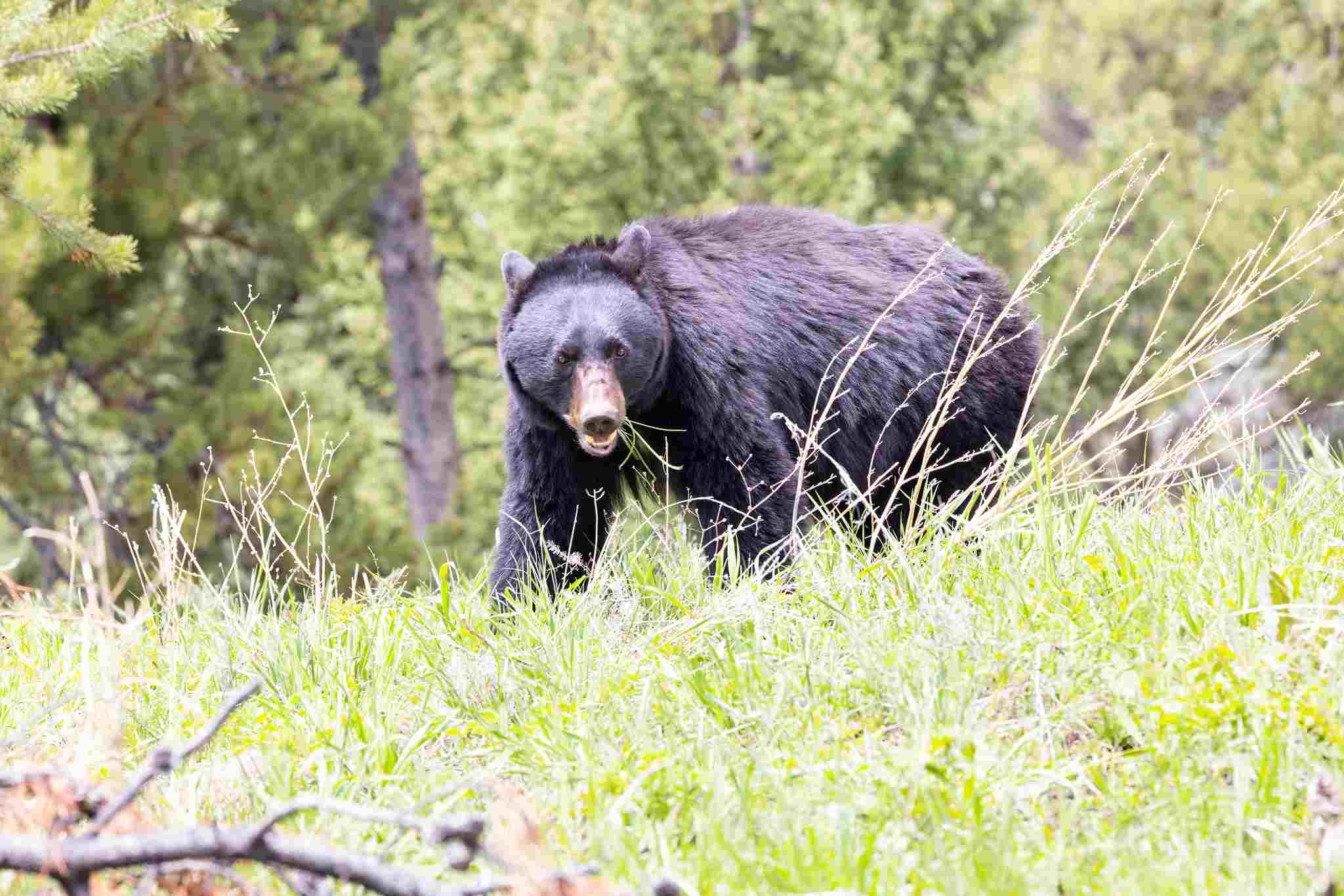
Conclusion
-Similarities
When comparing grizzly bears and black bears, there are several similarities that can be observed. Firstly, both species belong to the same taxonomic classification, Ursus. This means that they share a common ancestry and have similar skeletal anatomy. Additionally, both grizzly bears and black bears have a similar mode of locomotion, relying on their four legs to move around.
In terms of physical characteristics, both species have a similar size, with adult males reaching an average height of around 3 to 4 feet at the shoulder. They also have a similar weight range, with adult males weighing between 300 to 600 pounds. This similarity in size and weight contributes to their relative strength and endurance, allowing them to be formidable predators in their respective habitats.
Another similarity between grizzly bears and black bears is their feeding and predation habits. Both species are omnivorous, meaning they consume a variety of plant matter, insects, and small to medium-sized mammals. This versatility in diet allows them to adapt to different environments and food availability.
While there are certainly differences between grizzly bears and black bears, it is important to recognize these similarities as they provide a foundation for understanding the broader comparison between the two species.
-Differences
The most significant difference between grizzly bears and black bears is their coat coloration. Grizzly bears typically have a light to dark brown coat, while black bears have a black or dark brown coat. This difference in coloration allows them to blend in with their respective habitats, providing camouflage and protection from predators.
Another notable difference is their size. Grizzly bears are generally larger and heavier than black bears. Adult male grizzly bears can reach heights of up to 4 to 5 feet at the shoulder and weigh between 600 to 1,200 pounds, while adult male black bears are smaller, averaging around 2.5 to 3 feet at the shoulder and weighing between 200 to 600 pounds.
In terms of behavior, grizzly bears are known to be more aggressive and territorial compared to black bears. Grizzlies are more likely to defend their territory and exhibit dominance behaviors, while black bears are generally more timid and avoid confrontations.
These differences in coat coloration, size, and behavior contribute to the distinct characteristics and ecological roles of grizzly bears and black bears in their respective habitats.
-Hypothesis
Based on the physical and behavioral differences between grizzly bears and black bears, it can be hypothesized that in a violent confrontation, the grizzly bear would have the advantage over the black bear. The larger size and greater strength of the grizzly bear, combined with its powerful claws and teeth, would likely give it the upper hand in a fight.
However, it is important to note that actual confrontations between these two species are rare, as they tend to avoid each other’s territories. This hypothesis is based on the comparison of physical attributes and is not a definitive conclusion, as other factors such as individual temperament and circumstances could also influence the outcome.

